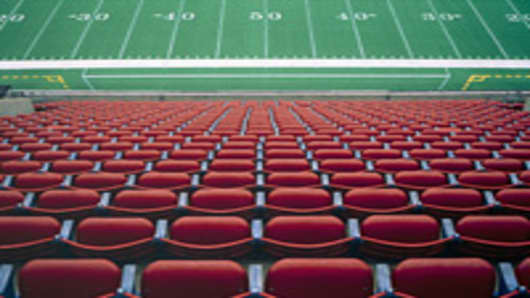The country’s first sports buildings were designed to be multipurpose with the facility boom of the 1980s and 1990s that followed bringing us the “modern” sports venue focused instead on offering a single purpose experience with improved sightlines and increased revenue generating abilities from parking, sponsorship, suites, clubs, premium areas, other hospitality, etc.
Fastforward to today and you’re beginning to see smaller, “sport-specific” venues like the MLS’ new Red Bull Arena in the New York Area.
I had the pleasure of touring the facility in late April and it is a beautiful stadium – no one can argue the intimacy of watching a soccer match there, (Red Bull is the KING of branding -- the in-stadium signage alone was an experience) and therein lays the problem, however.
As the cost of constructing these buildings continues to climb, how do you offset the need for greater revenue generation when there is an inherent lack of ability to accommodate additional event days for other uses in these custom, single purpose designs?
The markets are now beginning to reach levels of saturation and the ability to maximize revenues through traditional avenues such as suites and clubs has remained static. Couple that with soaring construction costs and the lack of ease of obtaining public or private financing.
Complicating matters is an element many individuals outside of the sports business industry do not realize – sports venue construction is dominated by a handful of experienced designers and contractors who, without significant challenge from new thinking, were slow to innovate. As such, the incestuous nature of the profession led to the cost of these buildings spiraling up with the cost of materials to the point that new venues became nearly impossible to develop. A number of teams and cities were caught at the end of this cycle and still remain in search of new homes (such as the Sacramento Kings, San Francisco 49ers, Minnesota Vikings, San Diego Chargers, etc.).
This paradigm lends itself to only one true solution: Innovation. Knowing we will have to see something new to address the issues associated with constructing these facilities, what will the sports venue of the future look like?
The new Los Angeles NFL Stadiumis a great example of breaking the mold. Seeing the average cost of an NFL stadium crossing the $1 billion mark, it was our firm belief that at those numbers the economics of these venues — often used less than 20 times a year — simply could not be justified. Fortunately, we were approached by developer Ed Roski of Majestic Realty to study an alternative approach to the design of these venues. Drawing on the historic models of Dodger Stadium and the venerable Hollywood Bowl, the design nestles nearly two thirds of the seating bowl directly on grade into the hillside topography, thus removing 40 percent of the steel structure.
Much the antithesis of new Cowboys Stadium, this stadium utilizes simpler construction methods, less overall program and greater integration of outdoor areas in a “uniquely LA” design and experience that very well may make the difference in bringing back the NFL to LA.
Many of these elements represent traditional values of construction clear back to the Greeks and Romans. The reduction in steel proves that that a Super Bowl adequate facility could be developed for $400 million to $500 million less than a comparable NFL stadium while also lending itself to becoming the first LEED Gold and most sustainable facility in the NFL.
Though the Los Angeles NFL Stadiumis an extreme example, there are other simple ways of improving the fan experience (and therefore revenues) without making major expenditures or physical changes. This is more applicable to renovations and older facilities. How do you incorporate new and unique amenities that can offer more than just a viewing experience? A great recent example of this is what Digital Royaltyand the Cleveland Indians did at Progressive Field. The Indians became the first to designate a 10-seat section for the social media, calling it “The Tribe Social Deck.”
What’s Next? You Tell Us.
What direction is the future of the sports venue heading? We want to know what the end user wants going forward – the fan. How can we solve the difficult juxtaposition of needing to generate the most revenue possible but also offer state-of-the-art, sport-specific experiences? What would you like included in the price of a ticket when you decide to head to a game that you do not already associate with the experience? How can we better your stadium experience to increase the likelihood you become a return customer?
_______________________________
Joshua A. Boren is the Business Development Manager for Aedas Sport, an architecture and design firm specializing in new and renovating sports and entertainment facilities. Joshua is responsible for leading the firm's direction into new international business opportunities related to the sports and entertainment industry and establishment of the Aedas Sport brand. Having graduated from The Wharton School at the University of Pennsylvania, Joshua brings a real estate and entrepreneurial background to Aedas Sport. Past work experiences include time as both a banker and consultant with an emphasis on market and financial analysis for various real estate product types. Contact him at joshua.boren@aedas.com, on Twitter (@AedasSport) or via LinkedIn (Joshua A. Boren).


